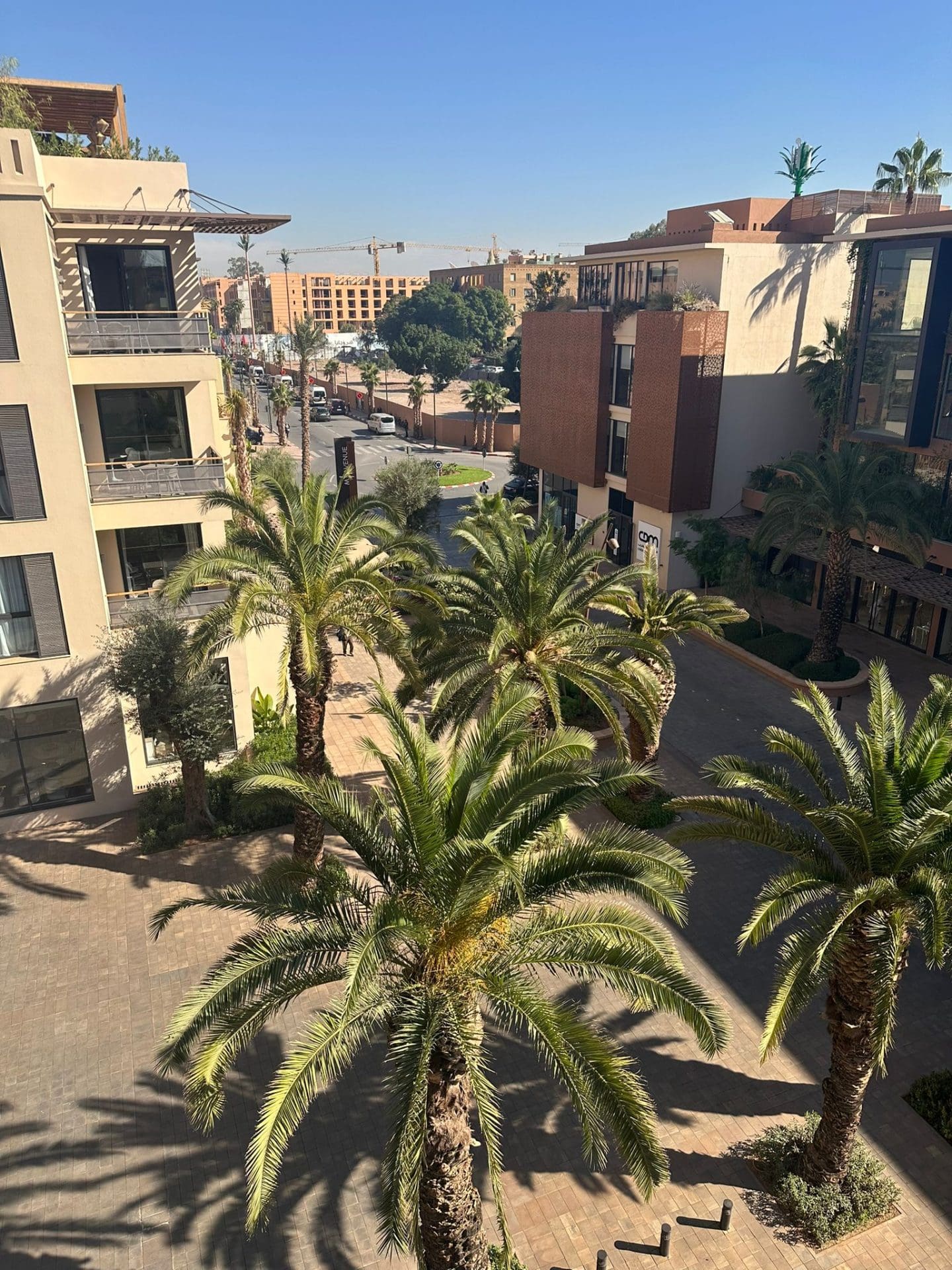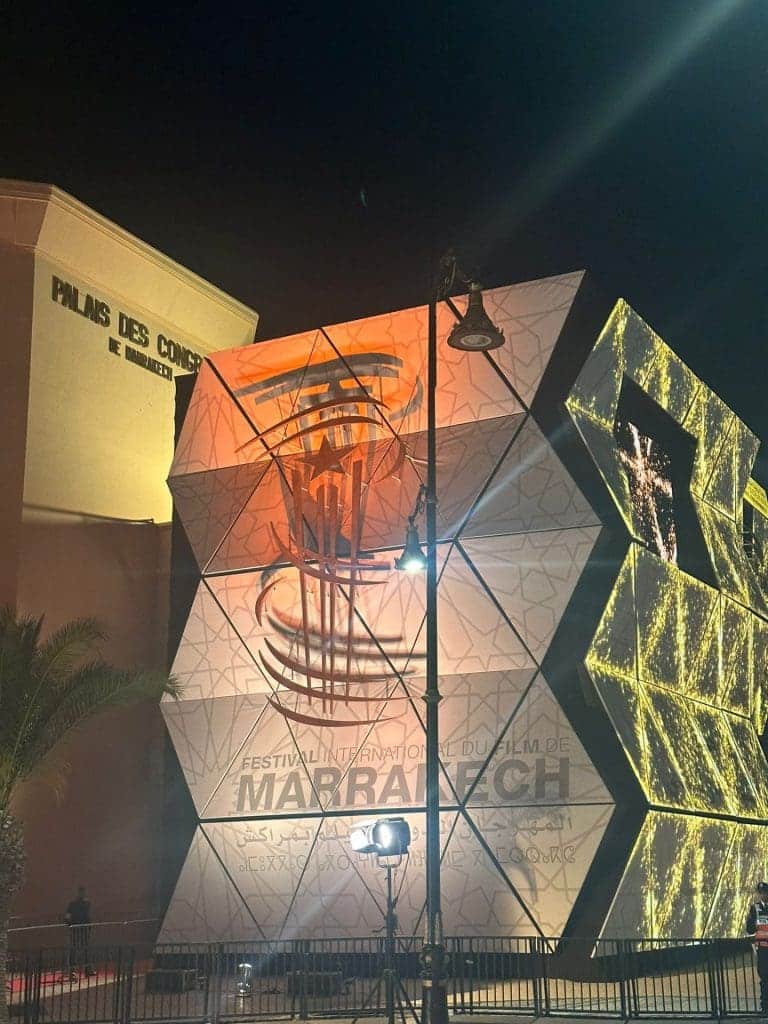
“She calls us like a siren, and we come to her from all corners.”
This is how Tilda Swinton described the influence of Melita Toscan du Plantier, the director of the Marrakech Film Festival, at last year’s closing ceremony. For a smaller festival (although, it must be said, the largest and most important in the Arab World), it attracts a surprising number of big names. In the past, Martin Scorsese, Robert De Niro, Vanessa Kirby, and others have found themselves in the Rose City as part of the jury, and this year, Melita has delivered Moroccan audiences Willem Defoe, Mads Mikkelsen, Jessica Chastain, Viggo Mortensen, Naomi Kawase, and Tilda – again.
Having visited the festival last year, I think that it’s an essential part of the film calendar—not just because of the access journalists are granted with these bigger names, but because of the representation of Arab and North African cinema. And so over the following week, Luke and I are excited to share a series of reviews and highlights. So stay tuned.
What’s changed from last year? Being the festival’s 20th anniversary, the scale is much larger when it comes to star power and press attendance. But there’s also a subdued feeling (on purpose according to the festival higher-ups, because of recent events between Israel and Palestine, and the horrific earthquake) so the famous outdoor screenings at Djemaa El-Fna square are cancelled, and there are fewer celebrations around the city.

The Opening Ceremony presented the jury at the city’s very own Palais des Congrès. It is in New Marrakech, outside of the city walls. Large boulevards, casinos, shopping malls, and glitzy cafes are quite the contrast to the Casbah or the winding, shadowy alleys and bustle of the souk—and thousands of locals surround the red carpet, taking pictures of the stars and trying to get autographs (the jury are actually very accommodating to the locals here, and are sometimes seen sitting amongst them in the screening rooms). Like last year, no expense is spared on the guests. The jury members stay at the famous Mamounia hotel, which is celebrating its 100th birthday and where we are invited almost daily to conduct our interviews.
Managing the press area is a serious operation. The interviews are organised and manned in a spacious andalusi-tiled courtyard with staff from Morocco, Britain and France (but French is the lingua-franca). The growling, rarely-satisfied press are asked to wait at tables under large marquee tents, while film crews unravel cords and adjust their cameras almost up until the final moment. Journalists side-eye one another with curiosity, or retreat to the back to avoid small-talk until the inevitable ‘So, who did you get?’ is heard from over your shoulder. Photographers, like our pal Ambra Vernuccio, flutter around the space like a wild butterfly (or, as she insists, more like a ‘prowling tiger’)—here one moment, there the other; on tip-toes, in no one’s way, but keen enough to be so as long as they get the shot. The photographers have a harder time of it.
On Sunday, Luke and I completed interviews with Willem Defoe and Mads Mikkelsen, which we will, of course, share with you once they’re written. In Willem’s case, we discussed the joys of revisiting work with certain directors, like Lanthimos and Eggers (‘You become a part of their palette’) and how Ashtanga Yoga has forever changed his acting method. I’ll admit that, although I’ve only done some yoga in the past, when Willem asked if I ‘practice’ I nodded my head with the same certainty of somebody who spends their winters stretched on bamboo mats in Costa Rica or Bali.

Today, after a press lunch, we are interviewing Jessica Chastain, Naomi Kurase, Tilda Swinton and Joanna Hogg. Keep an eye out for these articles in future issues.
The Mamounia is all spectacle. Artists flit by like rare birds. Jessica Chastain, Mads, Matt Dillon, and others, are comfortable enough to stroll around other guests. A friend, Shubhra Shetty, thoughtfully asked if I wanted to spend time with Anurag Kashyup—the Indian director of Gangs of Wasseypur and Kennedy, who is also here as part of a series of In Conversations that take place during the week. We’ll keep you up to date on our experiences with Anurag; most likely with an interview at some point at the Mamounia.
What do hungry journalists eat after a long day of screenings and interviews? Last year, I spent a lot of time at the popular Ferkous restaurant, which is cheap, attended by families and labourers and policemen, and is supposed to be one of the best places to eat tangia (not to be confused with tagine), the quintessential Marrakech dish: meat stew in an earthenware pot, slow cooked for hours and poured over rice. There’s very few traditional spots in New Marrakech, so excuse us for trying out Fatburger (a Moroccan burger chain) and ordering beef sandwiches at the old Bus Station. Over the next week, between interviews and screenings, we’ll be seeking out authentic street food stalls in the Djemaa El-Fna and in the Casbah. I’ll likely write something this week on the food in Marrakech. And no more Fatburger. I promise.
That wraps up our first two days at the Marrakech Film Festival. Luke and I will be getting into the screenings starting today, with Beast, About Dry Grasses, and more booked in our schedule. There are plenty of brilliant Arab and North African films to discover, and we cannot wait to share our experiences of them with you—as well as covering some of our small adventures with the jury members and of Marrakech itself; what to do, where to go, and finally, what to see.





